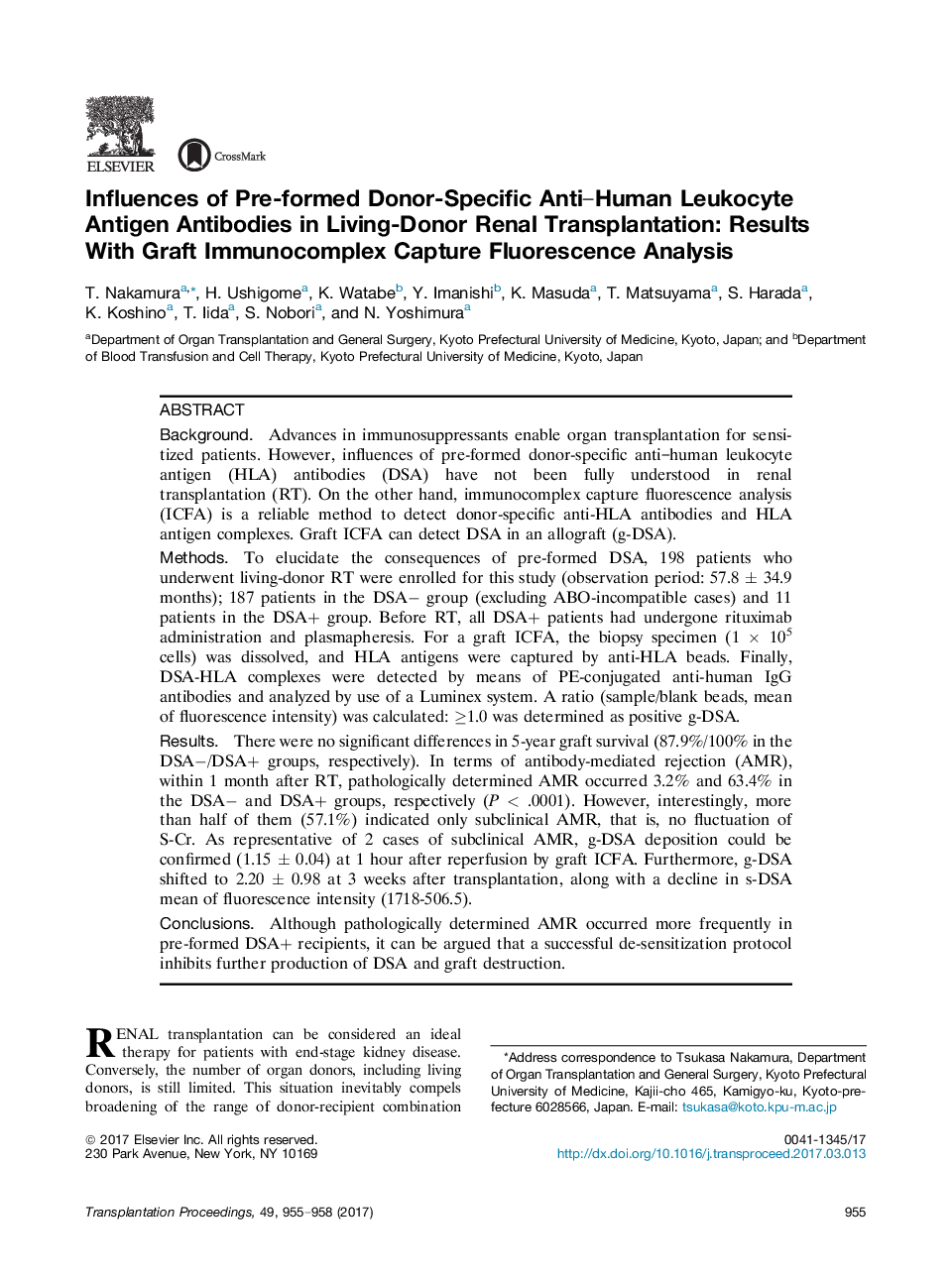| Article ID | Journal | Published Year | Pages | File Type |
|---|---|---|---|---|
| 5728777 | Transplantation Proceedings | 2017 | 4 Pages |
BackgroundAdvances in immunosuppressants enable organ transplantation for sensitized patients. However, influences of pre-formed donor-specific anti-human leukocyte antigen (HLA) antibodies (DSA) have not been fully understood in renal transplantation (RT). On the other hand, immunocomplex capture fluorescence analysis (ICFA) is a reliable method to detect donor-specific anti-HLA antibodies and HLA antigen complexes. Graft ICFA can detect DSA in an allograft (g-DSA).MethodsTo elucidate the consequences of pre-formed DSA, 198 patients who underwent living-donor RT were enrolled for this study (observation period: 57.8 ± 34.9 months); 187 patients in the DSAâ group (excluding ABO-incompatible cases) and 11 patients in the DSA+ group. Before RT, all DSA+ patients had undergone rituximab administration and plasmapheresis. For a graft ICFA, the biopsy specimen (1 à 105 cells) was dissolved, and HLA antigens were captured by anti-HLA beads. Finally, DSA-HLA complexes were detected by means of PE-conjugated anti-human IgG antibodies and analyzed by use of a Luminex system. A ratio (sample/blank beads, mean of fluorescence intensity) was calculated: â¥1.0 was determined as positive g-DSA.ResultsThere were no significant differences in 5-year graft survival (87.9%/100% in the DSAâ/DSA+ groups, respectively). In terms of antibody-mediated rejection (AMR), within 1 month after RT, pathologically determined AMR occurred 3.2% and 63.4% in the DSAâ and DSA+ groups, respectively (P < .0001). However, interestingly, more than half of them (57.1%) indicated only subclinical AMR, that is, no fluctuation of S-Cr. As representative of 2 cases of subclinical AMR, g-DSA deposition could be confirmed (1.15 ± 0.04) at 1 hour after reperfusion by graft ICFA. Furthermore, g-DSA shifted to 2.20 ± 0.98 at 3 weeks after transplantation, along with a decline in s-DSA mean of fluorescence intensity (1718-506.5).ConclusionsAlthough pathologically determined AMR occurred more frequently in pre-formed DSA+ recipients, it can be argued that a successful de-sensitization protocol inhibits further production of DSA and graft destruction.
